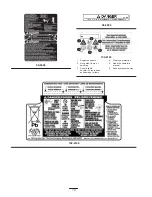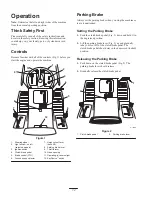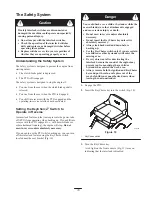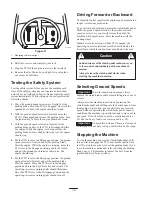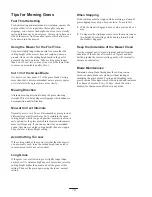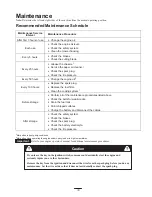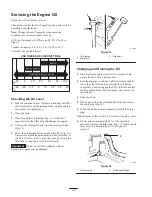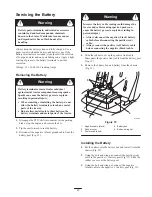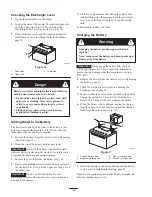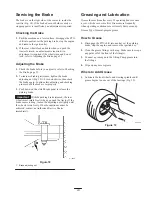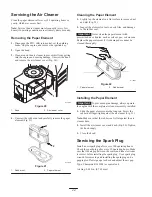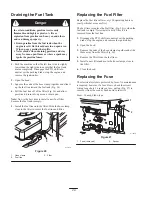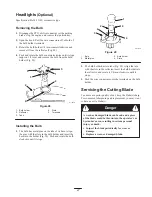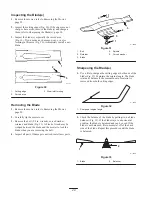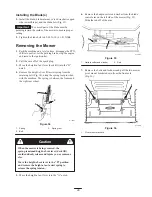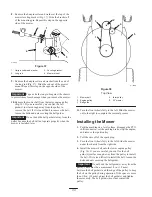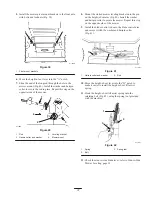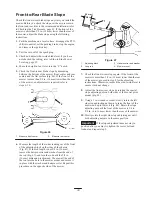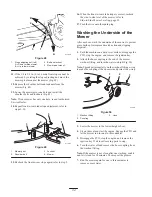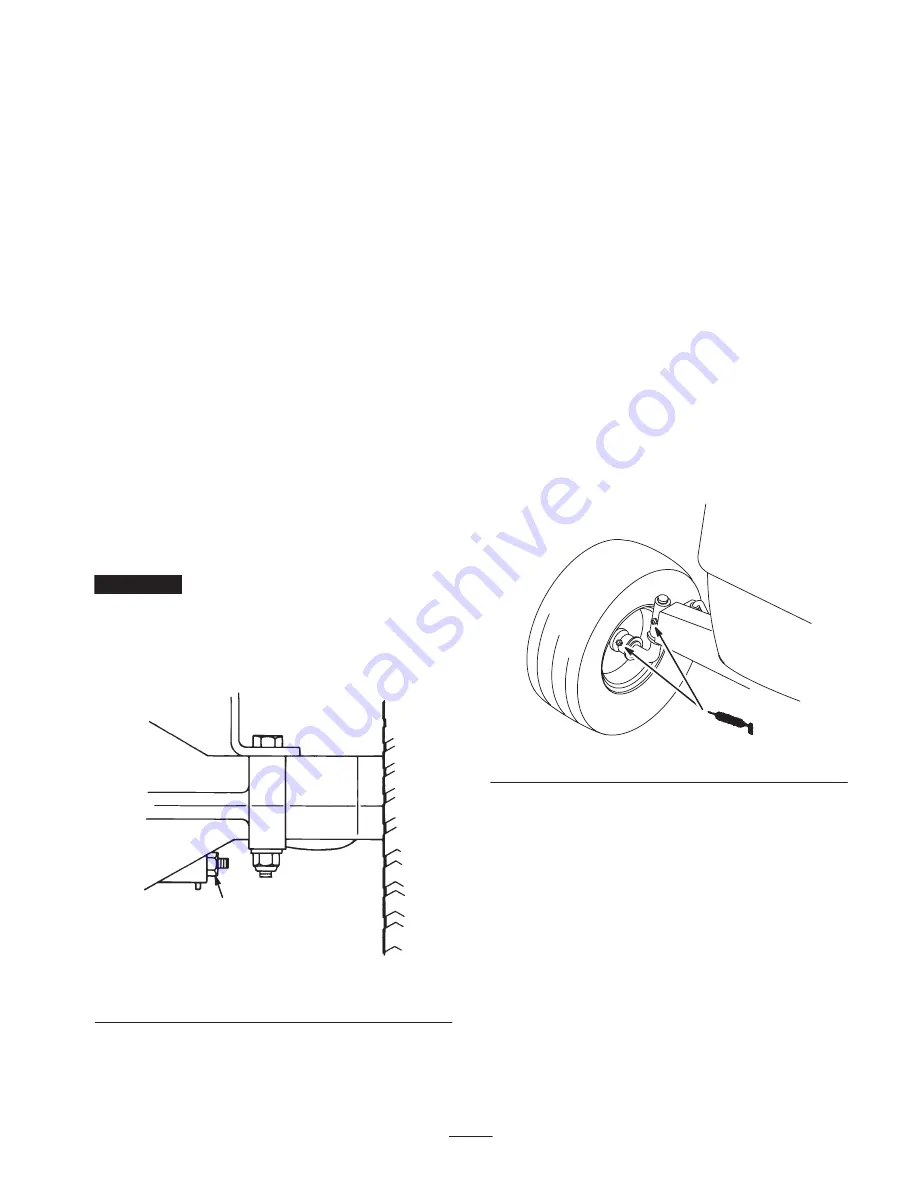
23
Servicing the Brake
The brake is on the right side of the rear axle, inside the
rear tire (Fig. 18). If the brake does not hold securely or
stopping power is insufficient, an adjustment is required.
Checking the Brake
1. Park the machine on a level surface, disengage the PTO,
shift into neutral, set the parking brake, stop the engine,
and remove the ignition key.
2. If the rear wheels lock and skid when you push the
tractor forward, no adjustment is required. An
adjustment is required if the wheels turn and do not
lock; refer to Adjusting the Brake, page 23.
Adjusting the Brake
1. Check the brake before you adjust it; refer to Checking
the Brake, page 23.
2. To increase braking resistance, tighten the brake
adjusting nut (Fig. 18) 1/8 turn clockwise; then check
the brake again. Continue this adjusting and checking
process until the brake is set properly.
3. Push down on the clutch/brake pedal to release the
parking brake.
Important
With the parking brake released, the rear
wheels must rotate freely when you push the tractor. If the
brake seems to drag, loosen the adjusting nut slightly until
the wheels rotate freely. If both conditions cannot be
achieved, contact an Authorized Service Dealer
immediately.
m–1895
1
Figure 18
1.
Brake adjusting nut
Greasing and Lubrication
Grease the machine after every 25 operating hours or once
a year, whichever occurs first. Grease more frequently
when operating conditions are extremely dusty or sandy.
Grease Type: General-purpose grease
How to Grease
1. Disengage the PTO, shift into neutral, set the parking
brake, stop the engine, and remove the ignition key.
2. Clean the grease fittings with a rag. Make sure to scrape
any paint off of the front of the fitting(s).
3. Connect a grease gun to the fitting. Pump grease into
the fittings.
4. Wipe up any excess grease.
Where to Add Grease
1. Lubricate the front wheels and steering spindles until
grease begins to ooze out of the bearings (Fig. 19).
m–2346
Figure 19


